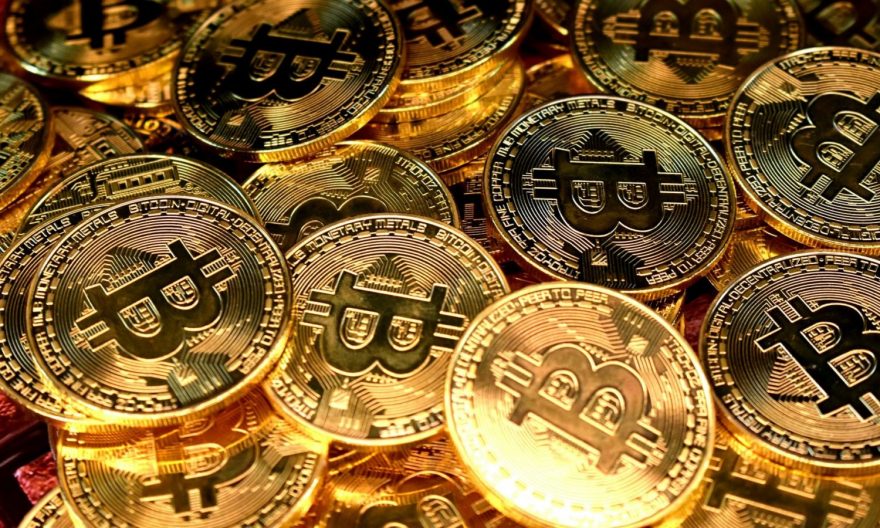
Cryptocurrency functions through the network, where a large number of computers are employed, which is why cryptocurrency is decentralized, and control of the currency is not confined to the hands of a government authority or a central authority.With everything being available online, cryptocurrency was a new phenomenon that enabled people to buy, sell, invest and trade in a currency that had no physical form. It stands out because it was decentralized and had no third party involvement unlike other payment systems, and this is the reason why any transaction made using cryptocurrency does not fail. When it comes to India, it is estimated that Indians have invested more than 1billion US Dollars in the cryptocurrency market alone, even though the fact that the picture regarding legality or cryptocurrency still seems blurry and unclear, creates a lot of confusion in the mind of investors as government lacks to take a strong stand of where cryptocurrency stands today and most essentials, what is its future it beholds.
Keywords: cryptocurrency, phenomenon, dece ntralized, blurry, unclear.
WHAT IS A CRYPTOCURRENCY?
A cryptocurrency is a medium of exchange that is, encrypted, decentralized and digital. There is no central authority to determine the value of cryptocurrency. Instead, the value of cryptocurrency is determined by its customers over the Internet. Cryptocurrency got its name because it uses encryption to verify transactions. This means advanced coding is involved in storing and transmitting cryptocurrency data between wallets and to public ledgers. The aim of the encryption is to provide security and safe. Cryptocurrency is considered to be a pretty safe bet, because it uses the blockchain technology. It is a set of blocks that record transaction like who made the transaction to whom like a digital ledger that is disrupted and replicated in the entire network.The 2019 Bill defined Cryptocurrency as any information, code, number, or token generated through cryptographic means or otherwise, which has a digital representation of value and has utility in business activity, or acts as a store or a unit of account.
IS IT LIKE BITCOIN?
In a word, yes. Bitcoin was the first cryptocurrency, and is still the biggest, but in the eight years since it was created pretenders to the throne have come along.
WHAT EXACTLY IS A BITCOIN? CAN I HOLD ONE?
A bitcoin doesn’t really exist as a concrete physical – or even digital – object. If I have 0.5 bitcoins sitting in my digital wallet, that doesn’t mean there is a corresponding other half sitting somewhere else.
BACKGROUND
Many crypto hobbits were inclined towards to emergence of bitcoin in India. It was the first time back in 2013 when a pizza shop called Kolonial in Mumbai, started accepting bitcoin as physical currency. In the year 2012 when cryptocurrency gained momentum in India and the price of cryptocurrency that was 5$ went to 1000$ in the year 2017. This gave a market to Bpay, Coinsecure, Unocoin, Koinex, and Pocket Bits, to enter, India letting people trade in cryptocurrency.
As the market expanded and investors became more and more interested. RBI saw this stir in the investor’s market, sprang into action, and declared that they do not back such currencies and they are merely speculative and will not be considered as an asset.
They further quoted sec 35A, 361A,45L,45, and Sec 65 of Banking Regulation Act which gives them the authority to caution people concerning public interest, and Sec 18 of Payments and Settlement System Act 2017. Later this circular was challenged in the case Internet and Mobile Association of India and Others v RBI . In this case, the petitioner argued that RBI holds no jurisdiction to impose a ban on cryptocurrency and that RBI is not well versed with what cryptocurrency is and has wrongly interpreted it.
They further claimed that many investors have invested in it and this sudden ban affects them and cleared that cryptocurrency as the name suggests is not a currency but a medium of exchange or a store of value. RBI contended that they do have jurisdiction as it is a mode of digital payment and it gives authority to RBI to regulate it. The SC gave its judgment in the year 2020, stating that even though RBI has enough powers to regulate cryptocurrency, but RBI prima facie fails to show at least some resemblance of any damage suffered by its regulated entities and ordered to take back its decision to effectively bar cryptocurrency in India.
THE RISE OF CRYPTOCURRENCY IN INDIA
Failed Government Policy:Due to the outbreak of the covid 19 pandemic, people suffered a big amount of monetary loss and somehow the govt policies failed to provide a big relief to the investor. Hence people aim to invest at places where they can expect higher returns and returns of bitcoin etc. are high as compared to the interest provided by Indian financial Banks.
Disillusionment with the banking system:Lower Interest rate, loan waivers, public sector banks bailing out with public’s money creates a question on the working of public sector banks. Crypto banks on the other hand do provide a loan with less interest rate.
TAX EXCEPTION IN CERTAIN CASES:
On taxability of bitcoins earned during the ‘mining’ process, Wadhwa said, Bitcoins generated during the ‘mining’ process are classifiable as self-generated capital assets. Since the cost of acquisition of such Bitcoins is not available, the taxpayer can take the benefit of the judgment of the Supreme Court in the case of B.C. Srinivasa Shetty [1981] 5 (SC). In this case, it was held that if the cost of acquisition of an asset cannot be ascertained, the machinery provision for computation of capital gains will fail, therefore, no capital gains can be levied on the transfer of such assets. Therefore, Bitcoins generated in the ‹mining› process may be exempt from the tax.
Crypto is a digital gold:Crypto is now considered digital gold. If one invests in Crypto, the rise is pretty high. Bitcoin has meteoric rise. On 1 Oct 2013, Bitcoin has a rate of 123$ and in Jan 2021 the rate is 34000$ USD. India holds a high value for gold. Currently gold in India is 25000-50000. If a person invests in gold, the money is doubled while bitcoin gave 340 times more return ad hence is considered as digital gold.
Crypto Banks in IndiaCrypto banks like Easyfi Network, Vault, Kasa have started operating in India. The CEO of Vault, states that until now, they have given a loan of approx. $25 billion as loan. Cashaa has tied up with United, a Jaipur-based multistate cooperative society, to form a brick-and-mortar crypto bank called Unicas.Its branches are in Gujrat, Rajasthan, and Delhi. Their crypto banks work in such a way that let us say if a person has cryptocurrency like Bitcoin, Ripple and the person want some loan, crypto can be given as security, then considering the market value of crypto at that time a person will get 50-60 percent loan of the price of crypto.
This is because there are high chances of fluctuation on cryptocurrency. There is no specific time as to when that loan has to be returned, though obviously, one has to pay interest. Another point that makes cryptocurrency stand out is that banks usually demand interest of 12-24%, while one has to pay interest of 12%-15% only on cryptocurrency, along with a 2%-5% processing fee.The process of granting a loan in cryptocurrency is instant and what is the creditworthiness, CRISIL scores of the borrower don’t matter. Hence it is an easier form of granting loans. One can even keep their crypto in the banks and they get 4%intrest in it.
Cryptocurrency Bill 2021The Bill has not yet reached the public domain but there is a high possibility of the bill banning cryptocurrency and introducing digital currency of RBI, which will raise a lot of questions from the investors.
DRAWBACKS OF CRYPTOCURRENCY? (WHY GOVT WANTS TO BAN CRYPTO)
Sovereign Guarantee:Cryptocurrency is speculative. People invest in high amounts to attain big returns. This leads to Market Volatility. It means prices fluctuate a lot and many people can suffer big losses, thus has a huge risk.
ILLEGAL USE:
Cryptocurrency acts as an opportunity for those who plan to evade taxes or do money laundering. Easy mode of transfer in Cyber- terrorism, the most famous case was of WannaCry and Petya viruses in which $300 was paid in Bitcoin to decrypt files. Wanna cry is a perfect example crypto ransom that was used by criminals to extort money online. The hackers locked the individual’s computer and in return demand ransomware in the form of cryptocurrency. The Petya attack did the same attack and demanded bitcoin as ransom.
RISK IN SECURITY
Digital currency is not operated by the govt and govt guarantee is not behind it.
CYBER ATTACKS
Anything that is available in cyberspace is always under constant threat of being hacked. Once the hackers find a way to penetrate the security system of cryptocurrency, they can create n number of cryptocurrencies, can sell them, and even steal cryptocurrency from other users. There is always a Malware Threat Because it is a digital currency, it can be hacked, one can lose their password, virus, etc.
Money laundering:People will start investing in money laundering and very easy as one can send money from country to country without any accountability. As per a report criminals laundered US$2.8 billion through crypto exchanges in 2019, compared to US$1 billion in 2018. Research on the internet indicated that approx. 56% of cryptocurrency users have weak K.Y.C.Economic disbalance:The creation of cryptocurrency is very different from how actual cash is created in the economy. E.g.- In India, only RBI has the authority to create cash. It can do so only after maintaining the Minimum Reserve System and an asset whose value is up to 200 crore. This creates a balance of demand and supply.
REGULATION OF CRYPTOCURRENCY IN INDIA
There was a notification by RBI which was titled prohibition on dealing with virtual currency which was read with section 35A of banking regulation act and section 45JA and 45L of Reserve bank of India act 1934 which imposes ban on all the institutions i.e. financial and it asks to refrain from providing services related to cryptocurrency transactions As a result of this circular the crypto market crippled over as banking service involves exchange of money, so many crypto users were forced to take out cash resulting in loss to both the industries which included banking and crypto industries.There was a petition filed in the Supreme Court by IMAI who are representing digital and online services in India, seeking to overturn the circular which was passed by RBI. The apex court applied the Doctrine of Proportionality and passed the decision in favour of cryptocurrency.
The supreme court was not able to decide on the validity of the bill called Banning of Cryptocurrency and Regulation of Official Digital Currency Bill, 2019 this bill has not been passed, the apex court said that the bill on one hand crypto users being faced with criminal penalties and there are other activities related to mining etc. which are prohibited by this bill and this bill also envisages and cleared the way for government to launch its own digital currency which is called as digital rupee.
CLASSIFICATION OF CRYPTOCURRENCIES
Recently, according to the data of April 2021, there are more than 10,000 types of cryptocurrencies circulating across the globe.
TYPES OF CRYPTOCURRENCIES
They fall into two categories which are Tokens, Coins
Some popular cryptocurrencies are:
BITCOIN:
Bitcoin is the first officially accepted cryptocurrency, firstly being used by WordPress for making the transaction. It was developed by an unknown person in the year 2008 and was officially circulated in the year 2009. The transactions that take place in bitcoin are among the peer-to-peer network and the transfers are direct transfers that do not involve any intermediary.
LITECOIN:
The biggest competitor of Bitcoin in the modern market is Litecoin, which is another cryptocurrency that is used for basically transacting in a comparatively smaller value than Bitcoin and in a fast way. Charles Lee was the developer of Litecoin and which was developed in 2011. The basic difference between Bitcoin and Litecoin is that Litecoin can be developed and managed through a normal desktop with low processing whereas for Bitcoin the mining process is comparatively very heavy, hence today the value of Litecoin is compared with Bitcoin is four times than Bitcoin.
RIPPLE:
Ripple was developed in the year 2012 by Chris Larsen in a company called OpenCoin. The method by which Ripple works is very similar to Bitcoin, as the transactions that take place by Ripple can be done within seconds and in no time the funds can be transferred.
ETHEREUM:
Alternate name for Ethereum is Eter as it was named after the platform it was developed on that was Ethereum. It was developed in the year 2013 by a computer programmer who was also a researcher on cryptocurrency only. The platform of ethereum is public and a smart scripting facility is also available on it. It is a platform made friendly for cryptocurrency and so it can be used for the purpose of making transactions as well. The price of Ethereum has grown significantly in the past year.
MINTCHIP:
Mintchip is somewhat different from other cryptocurrencies as it traces its origin from the Royal Canadian Mint and is also backed by the Canadian Dollar. It is a smart card with electronic value and it can be used for making transactions that are secure and safe in nature. Mintchip has some similarities with Bitcoin as the user cannot be traced but unlike Bitcoin or any other cryptocurrency, it is the only cryptocurrency that is backed by physical and real fiat money i.e., the Canadian Dollar.
CHALLENGES REGARDING CRYPTOCURRENCY
Initially when cryptocurrency started to circulate in the markets not many people were aware of the technology behind it and only a few people knew what cryptocurrency is. But when it comes it the legality of such currencies, initially people thought that because as the origin of the user could not be traced, cryptocurrency was used for all kinds of illegal purposes and on places such as the dark web, to fund terrorist activities, to deal illegally in drugs, black markets and a lot more such activities.
Nowadays, many countries are friendly with the use of cryptocurrency as a medium of exchange there, some are neutral but some countries are very restrictive to the use of cryptocurrency as a medium of exchange there. Talking about India, after a lot of dawdling of either banning or legalising cryptocurrencies, the Indian government has taken some encouraging steps for the regulation of cryptocurrencies in the country.
IMPACT ON THE INDIAN ECONOMY
India is a country with the second largest population in the world and the amount of change the Indian financial market has gone through in the past years is nothing but a renaissance for the country.And with such a huge population and almost 70% of the total population having access to the internet and web services, cryptocurrency is not a new concept in India. Bitcoin and other types of tokens as well as coins with all forms of cryptocurrency have been used in India for a long time now. In the year 2012, Bitcoin transactions started to take place in the country, when slowly and gradually in the year 2013 when cryptocurrencies were rising across the globe and a few business houses started to accept payment by the mode of Bitcoin, a small pizza place in Worli, Mumbai became the first restaurant to accept payment through Bitcoin.
In no time, cryptocurrency started to gain popularity in the Indian market and shortly pioneers like Unocoin, BtexIndia and others started to offer cryptocurrencies transactions and exchanges that could take place via cryptocurrencies and soon after this Bitcoin-India, ZebPay and others also started to deal in cryptocurrencies.
LEGALITY OF CRYPTOCURRENCY IN INDIA
According to the latest development, the government is planning to impose Cryptocurrency and Regulation of Official Digital Currency Bill, 2021 which plans to impose a complete ban on private cryptocurrencies but also keeping in mind the grey areas will also provide a framework as to the regulation of cryptocurrency and will provide certain exceptions as to the transactions that can take place via cryptocurrencies. India with the help of the Ministry of Corporate Affairs has managed the use to some extent but still, there is a long way to cover in near future and therefore is planning to introduce the new bill.
In March 2021, the government has issued new guidelines to businesses that before the start of the new financial year they have to disclose their income from cryptocurrencies which were undertaken in the previous financial year
CONCLUSION
The Indian Government should step up in this era of cryptocurrency as it can bring a huge leap in technological innovation in India. It is estimated that the tax imposed on cryptocurrency will add up to a whopping amount of direct tax to the Income Tax Department which can give a major push to the economy’s overall development.
Rather than putting a blanket ban, the Indian Govt should take steps to regulate cryptocurrency, making it safer, transparent, and more trustworthy. The more aware the citizens will be towards the functioning of cryptocurrency, the more investment it is expected, especially in a developing economy like India with the second largest population. The future that cryptocurrency holds is encouraging with regards to e-business, e investments, and e payments.It is important that the laws have to be made relating to cryptocurrency keeping in mind the various financial, legal, aspects of the country aiming towards a more secure and consumer-friendly system to deal with crypto.
END-NOTES
Sunil Kumar Sharma & Krishma & Nihda Nisar & Er. C.K. Raina, Survey Paper on Cryptocurrency, 2IJSRCSEIT 307 (2017)
Brian Martucci, What is Cryptocurrency-How it Works History and Bitcoin Alternatives, https://www.moneycrashers.com/.
Understanding The Different Types of Cryptocurrency, Sofi Learn, January 2021; https://www.sofi.com/learn/content/understanding-the-different-types-of-cryptocurrency/?
Ashish Kheskani, Harsha Bucha, Yogita Aggarwal, Dr. Varsha Agrawal-A Study on Cryptocurrencies and Its Issues, 5 IJRAR, 48a, 49a (2018).
Reserve Bank of India, Prohibition on dealing in Virtual Currencies (VCs), (April 6th 2018), www.rbi.org.in/Scripts/NotificationUser.aspx?Id=11243&Mode=0.
Internet and Mobile Association of India V. Reserve Bank of India, Writ Petition (Civil) No.528 of 2018.
The Constitution of India,
http://www.mca.gov.in/Ministry/pdf/ScheduleIIIAmendmentNotification_24032021.pdf.
The legality of cryptocurrency in India; The Legal 500;Amanraj Singh Chadha,Sarthak Chawla (July 18; 14:57 PM) https://www.legal500.com/developments/thought-leadership/the-legality-of-cryptocurrency-in-india/.
https://www.kaspersky.com/resource-center/definitions/what-is-cryptocurrency
Writ Petition (Civil) No.528 of 2018.
The post The rise of cryptocurrency in India: Challenges and potential impacts on legislation appeared first on The Daily Guardian.




